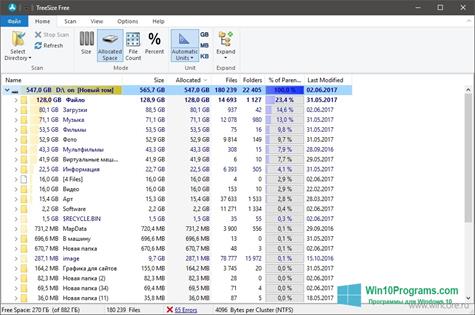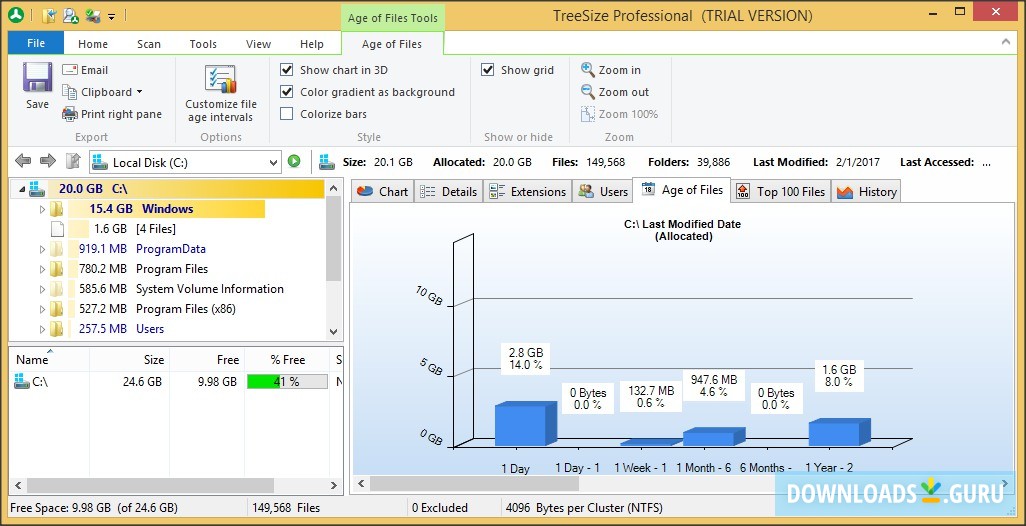

- #Treesize windows 10 install
- #Treesize windows 10 update
- #Treesize windows 10 full
- #Treesize windows 10 portable
This would be great to carry with you on a flash drive.Įach time it opens, you're asked what directory to scan.
#Treesize windows 10 portable
I prefer portable software in some situations, so I appreciate that Disktective is portable and takes up less than 1 MB of disk space.
#Treesize windows 10 update
Don’t forget to check out our Youtube Page for sysadmin video content.Unable to delete files directly from the program.Īn update hasn't been released since 2010.
#Treesize windows 10 full
If you like these kinds of posts, feel free to check out our gallery full of useful real-world scripts. It’s not that much effort to run and it provides a ton of useful information so it’s pretty much a no brainer.Īll in all I wanted to say thanks a lot for taking the time to visit and hopefully you can make use of the Powershell script in your environment. I’m pretty stoked how quickly it was able to process remote servers and I’m sure I’ll be adding this to my list of audit tasks. So hopefully you were able to make use of the Powershell script to get directory tree size including all subfolders. For this I replaced the original $Path location with “.\” so it’s relative to $Path. You can also sort by FolderSizeInMB and see which folder has the most space.Īnother thing to note is that I wanted to shorten the display of the subfolders so it doesn’t push the file, directory and size counts off the screen. The Recurse parameter allows you to drill down all folders and view stats. When you call the function and only specify the path parameter, here is what it looks like.

If (-not $PSBoundParameters.ContainsKey("AllItemsAndAllFolders") -and -not $PSBoundParameters.ContainsKey("Recurse")) " -f ($FileStats.Sum / 1MB) -as = $Folder.Replace($Path,".\") #Adding a trailing slash at the end of $path to make it consistent. ParameterSetName = "ShowTopFolderAllItemsAndAllFolders" If you have any questions feel free to drop me a comment and I’ll do my best to get back to you.
#Treesize windows 10 install
I know there are programs such as windirstat and treesize but I didn’t necessarily want to install anything on my server, much less worry about patching it or removing it later. I thought it to be highly unusual that it could be filled up so fast so I wanted to see what folders were taking the most space remotely. The problem was that this was a relatively new server with several terabytes of disk space. Typically, I would just go into VMware vCenter, expand the disk and call it a day. The other day I got some alerts saying that one of our file servers was running out of space.


 0 kommentar(er)
0 kommentar(er)
